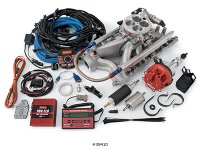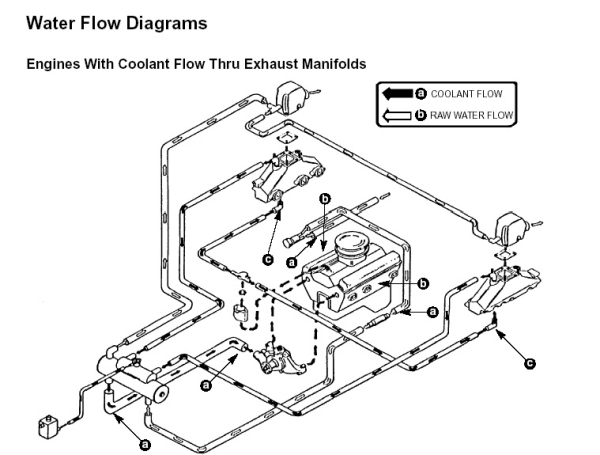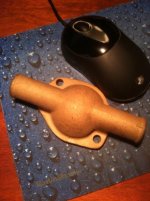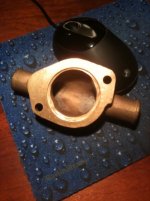nixes mate
Member
I am a newbie to this forum but I am a long term boater and engine buff.
I recently purchased a 21’ four wins (1991). It came with a blown OMC 302, 2bll and a cobra drive. I immediately proceeded to replace the motor with a 351W.
Fortunately the original motor had new manifolds and risers so I decided go the length and fresh water cool the system. This turned out to be a bit tricky but in the end it worked well and allowed me to use a street motor.
Anyway last summer I managed to put about 60 hours on the boat and it treated me well with only a few after the fact tweaks. My only issue was WOT. Running the 19 inch prop that came with the boat (2 passengers, ½ fuel) I was only able to bring it up to 33-3400. Considering this was the prop from the 302 I was expecting more. I concluded that the 500cfm carburetor from the 302 was just too small. This being the only issue I ran it for the summer and saved that as a winter project.
Well winter is here and the 500cfm carb has been replaced with EFI, another tricky upgrade but it works. At least it starts and runs. Having looked through the threads I noted a few things I need to look out for i.e. fuel bubbles, ventilation ect. I was hoping that some others have attempted this upgrade and would be willing to share there experience particularly what may have stung you.
Thanks in advance
Nixes mate
I recently purchased a 21’ four wins (1991). It came with a blown OMC 302, 2bll and a cobra drive. I immediately proceeded to replace the motor with a 351W.
Fortunately the original motor had new manifolds and risers so I decided go the length and fresh water cool the system. This turned out to be a bit tricky but in the end it worked well and allowed me to use a street motor.
Anyway last summer I managed to put about 60 hours on the boat and it treated me well with only a few after the fact tweaks. My only issue was WOT. Running the 19 inch prop that came with the boat (2 passengers, ½ fuel) I was only able to bring it up to 33-3400. Considering this was the prop from the 302 I was expecting more. I concluded that the 500cfm carburetor from the 302 was just too small. This being the only issue I ran it for the summer and saved that as a winter project.
Well winter is here and the 500cfm carb has been replaced with EFI, another tricky upgrade but it works. At least it starts and runs. Having looked through the threads I noted a few things I need to look out for i.e. fuel bubbles, ventilation ect. I was hoping that some others have attempted this upgrade and would be willing to share there experience particularly what may have stung you.
Thanks in advance
Nixes mate





